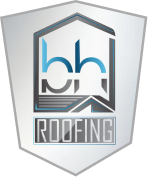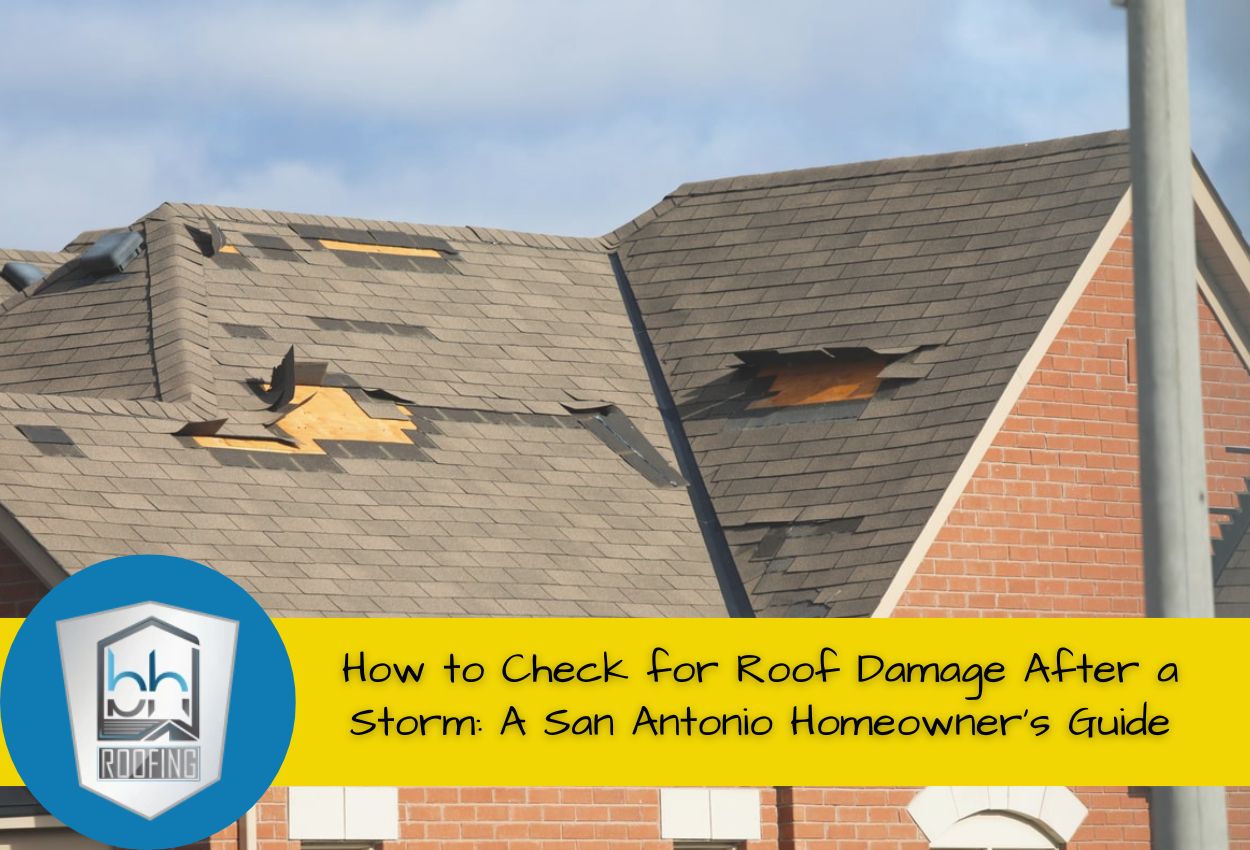When severe weather strikes San Antonio, your roof stands as the first line of defense against nature’s fury. From intense summer thunderstorms to unexpected hail events, local roofing systems face conditions that can compromise their integrity. Identifying roof damage promptly after a storm is crucial for preventing major structural problems that require costly repairs.
San Antonio homeowners should understand that a roof inspection after severe weather isn’t just about maintenance — it’s about protecting your investment and ensuring your family’s safety. Storm damage often appears subtle at first glance but can worsen quickly if left unaddressed. Water intrusion through even small openings can lead to mold growth, damaged insulation, and compromised structural elements.
Before attempting any post-storm roof assessment, safety must be your priority. Equipment like sturdy footwear, a reliable ladder, and adequate lighting is essential for DIY inspections. Weather conditions must also be considered. Never inspect during continued storms, high winds, or if lightning is forecasted. Many types of damage, particularly after significant hailstorms or high winds, warrant professional evaluation rather than homeowner assessment.
Knowing the signs of roof storm damage and how to conduct a thorough inspection can help you determine whether professional intervention is necessary and provide documentation for potential insurance claims.
Visible Signs of Storm Damage You Can Spot From Ground Level
After a storm passes through San Antonio, you can begin assessing potential roof damage without climbing a ladder. A ground-level inspection offers valuable initial insights while keeping you safe. Start by grabbing a pair of binoculars for a detailed view of your roof’s surface. Scan for missing, curled, or displaced shingles, which appear as irregular patterns or exposed darker areas on your roof.
Pay special attention to roof valleys, edges, and areas around chimneys or vents where flashing might have pulled away. These metal components can become loose during high winds, creating entry points for water. Also, look for visible sagging areas, which may indicate structural damage beneath the shingles.
Next, examine your gutters and downspouts for shingle granules, which look like coarse black sand. Excessive granule loss after a storm suggests shingle deterioration. Check the ground around your home for fallen shingle fragments or roofing materials that may have blown off during severe weather.
In San Antonio’s variable climate, storm damage can manifest in different ways depending on the season. Summer thunderstorms often cause wind damage, while winter weather events might result in stress from temperature fluctuations. Document any findings with photos from multiple angles — this evidence is helpful when working with insurance companies or professional roofers for repairs.
Common Types of Storm Damage to San Antonio Roofs
Understanding the specific types of damage that storms in San Antonio can inflict helps homeowners identify problems quickly and address them before they worsen. Two primary culprits behind roof damage in our area are high winds and hail, each leaving distinctive patterns of destruction that require different repair approaches.
Wind damage typically appears as lifted, creased, or missing shingles, particularly along roof edges and corners where pressure differences during storms create the strongest uplift forces. After thunderstorms roll through, check for shingles that appear rippled or have exposed nail heads — signs that the sealing strips have broken. Wind can also damage roof vents, flashing, and ridge caps, creating entry points for water. Even seemingly minor displacement of roofing materials can compromise your roof’s watertight seal.
Hail damage varies by roofing material. On asphalt shingles, look for random dark spots where granules have been knocked away, or small divots and bruises that feel soft to the touch. Metal roofs may show denting or dimpling after hail, while clay or concrete tiles commonly develop cracks, chips, or breaks at impact points. Fresh hail damage typically appears clean and lacks the weathering seen in older damage, making it identifiable during post-storm inspections.
Both wind and hail damage can significantly reduce your roof’s lifespan and protective capabilities if not immediately addressed by qualified San Antonio roofing professionals.
Interior Warning Signs That Point to Roof Damage
When checking for roof damage after a storm, don’t limit your inspection to the exterior — the inside of your home can also reveal signs of roof compromise. After severe weather passes through San Antonio, a thorough examination of your attic and living spaces can help detect roof leaks before they cause extensive damage to your home’s structure and belongings.
Start in the attic with a powerful flashlight. Scan the underside of the roof deck for water stains, moisture marks, or actual drips. Wet or discolored insulation is a major red flag, as it indicates water has penetrated your roofing system. Look closely at wooden beams and rafters for signs of rot, warping, or mold growth, as these issues suggest ongoing moisture problems from roof leaks. Any sunlight visible through the roof boards signals openings that allow water entry during storms.
Moving to your living spaces, examine ceilings for water stains, bubbling paint, or sagging sections, particularly after heavy rainfall. These symptoms typically appear directly below the compromised roof area. Wall discoloration near the ceiling edge often indicates water traveling down from roof damage. Check for peeling wallpaper or paint, as excess moisture can break down adhesives. Musty odors or visible mold growth on upper walls and ceiling corners frequently point to hidden roof leaks.
Documenting these interior signs helps San Antonio roofing professionals pinpoint the exact location of roof damage, making repairs more efficient and preventing future water intrusion.
The Importance of Documenting Roof Storm Damage for Insurance Claims
After identifying storm damage to your San Antonio home’s roof, documentation becomes critical for a successful insurance claim. Begin by photographing all damage immediately after the storm subsides and when it’s safe to do so. Take both shots of the entire roof and close-ups of specific damage. Capture images from multiple angles with good lighting to clearly show missing shingles, dents from hail impacts, or damaged flashing.
When photographing, include reference objects like coins beside hail dents to demonstrate size. Document interior damage as well, including water stains, ceiling discoloration, or moisture readings. Date-stamp all photos if possible, as timing can be crucial for claim approval.
Create a detailed written damage report to accompany your visual evidence. Note the date and approximate time of the storm, weather conditions, and specific damage locations. Include your maintenance history showing regular roof upkeep, which demonstrates the damage resulted from the storm rather than neglect. List any temporary emergency measures taken to prevent further damage, such as tarping exposed areas.
Organize all documentation chronologically in a dedicated folder, including receipts for emergency repairs. Many San Antonio homeowners find professional roof inspections invaluable for insurance claims, as certified roofing contractors can provide detailed damage assessments that carry weight with insurance adjusters, often identifying damage that might otherwise be overlooked.
When to Call a Professional Roofing Contractor for a Storm Damage Inspection
While DIY roof inspections can identify obvious damage, certain situations require professional expertise. Recognize your limitations as a homeowner — roofing professionals have specialized training, equipment, and experience to detect subtle damage patterns that untrained eyes might miss. Call a professional immediately if you spot structural sagging, multiple missing shingles, or widespread granule loss after a storm hits San Antonio.
A professional assessment becomes essential when you notice interior leaks, as these indicate that damage has already compromised your home. Similarly, if you see cracked or split shingles, damaged flashing around chimneys or vents, or dented metal components, these require expert evaluation. After severe hailstorms, a professional inspection is particularly important since hail damage can be difficult to identify but often qualifies for insurance coverage.
When selecting a San Antonio roofing contractor, verify their local credentials and storm damage expertise. Choose contractors with valid Texas licensing, comprehensive insurance coverage, including workers’ compensation and liability, and an established local presence. Ask potential contractors about their experience with post-storm assessments and repairs. Reputable professionals will offer free inspections, provide detailed documentation of damage, and explain repair options without using high-pressure sales tactics.
Remember that professional roofers can safely access steep or high roofs, identify hidden damage patterns, and provide the documentation needed for successful insurance claims, capabilities that far exceed typical DIY inspections when serious storm damage occurs.
Preventive Measures to Minimize Future Storm Damage
Taking proactive steps to protect your roof can significantly reduce the risk of storm damage in San Antonio’s unpredictable climate. Strategic preventive maintenance creates a more resilient roofing system that stands stronger against severe weather while extending your roof’s overall lifespan. These protective measures often cost far less than major storm repairs and help maintain your home’s value and structural integrity.
Regular maintenance should follow San Antonio’s seasonal weather. Before hurricane season, trim branches that could become projectiles during high winds or scrape against shingles. Clear gutters and downspouts in spring and fall to prevent water backup that can damage fascia boards and create ice dams during rare freezing events. Check and secure loose roofing materials during mild weather months, paying special attention to edge shingles that often lift first in high winds.
Consider upgrading to impact-resistant roofing materials specifically engineered for South Texas weather challenges. Class 4 impact-resistant shingles provide superior protection against hail damage common in our region. For maximum wind resistance, look for materials rated for at least 130 mph winds with enhanced nail zones and stronger adhesive strips. Metal roofs offer excellent longevity and storm protection, while newer synthetic materials combine durability with aesthetic appeal.
Professional roof inspections every few years can spot potential vulnerabilities before storms expose them. Ask your San Antonio roofing contractor about improved underlayment options, durable attic ventilation systems, and stronger fastening methods that meet local building codes and are designed for our region’s specific weather patterns.
Need a Professional Roof Inspection in San Antonio? Call BH Roofing!
After a severe storm, it’s crucial to assess your roof for damage that can compromise your home’s safety and integrity. While you can perform a basic check from the ground, some damage might not be clearly visible without a professional evaluation. BH Roofing specializes in thorough post-storm inspections and repairs to ensure your roof remains in top condition. Don’t risk missing hidden damages that could lead to expensive repairs. For expert roofing services and peace of mind, call BH Roofing at (210) 267-9029. Our experienced team is ready to assist you with a comprehensive inspection and solutions tailored to your needs.


